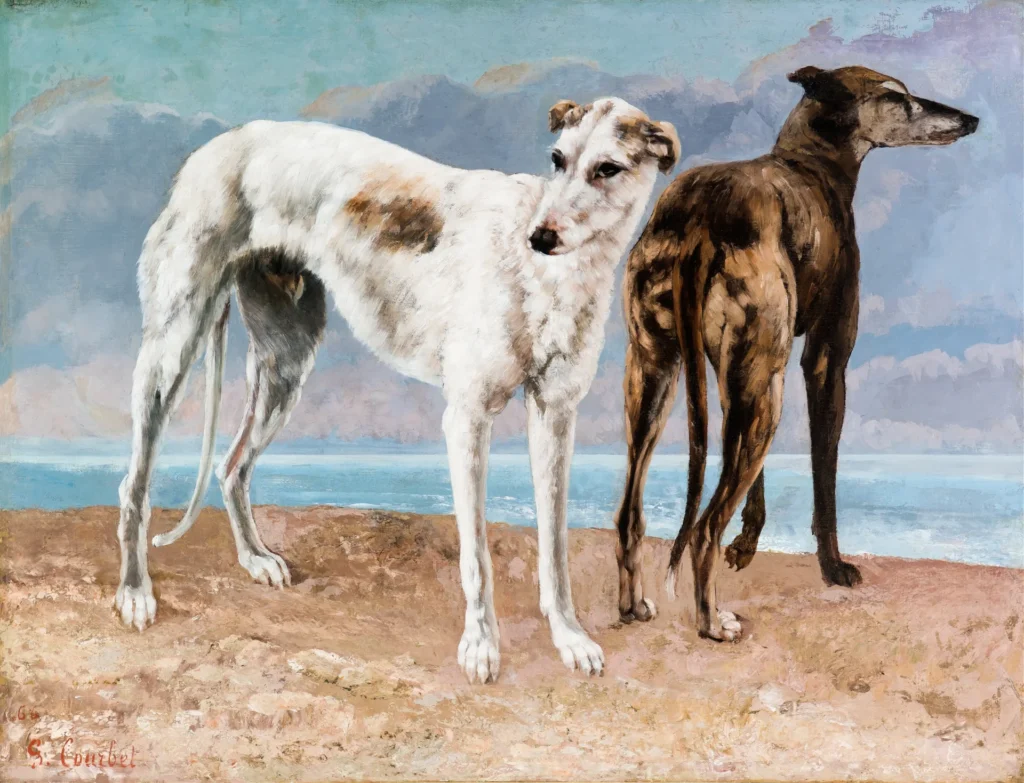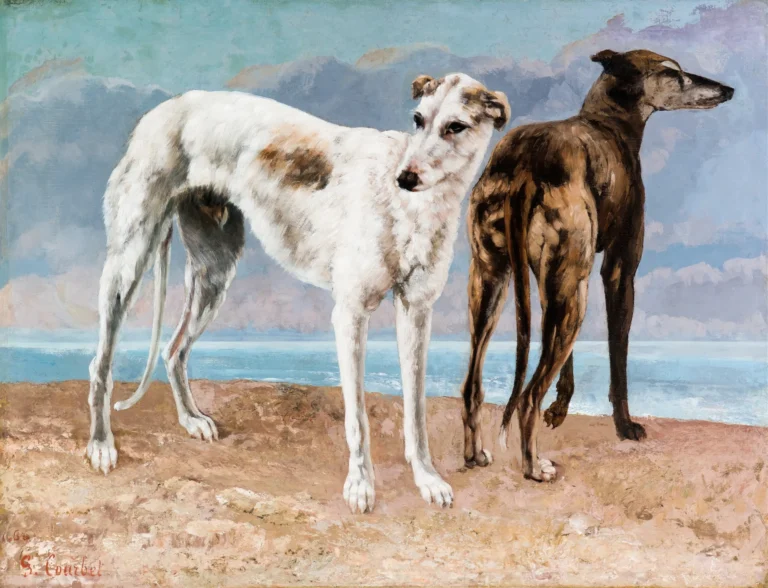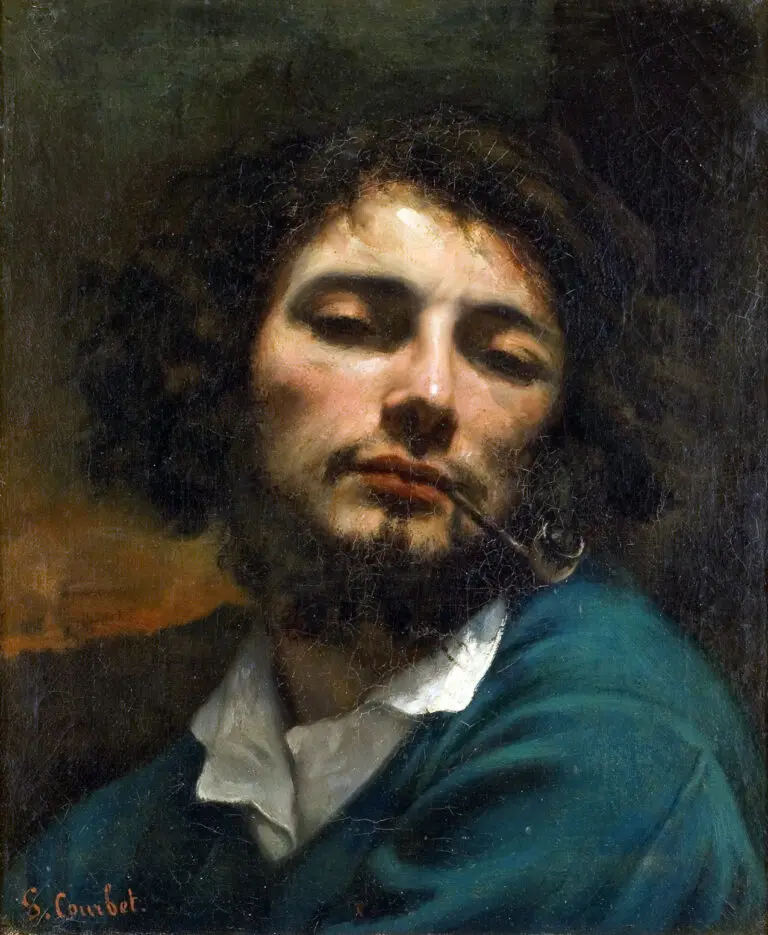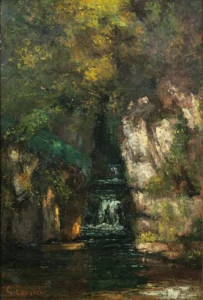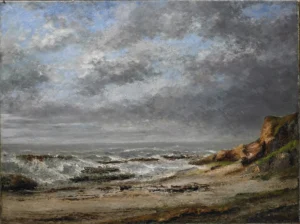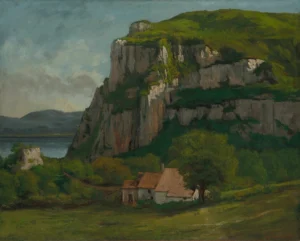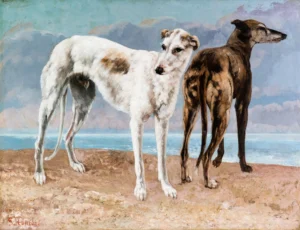The Greyhounds of the Comte de Choiseul (1866)
Gustave Courbet's The Greyhounds of the Comte de Choiseul is a masterful oil on canvas painting from 1866, showcasing the lifelike representation of two greyhounds belonging to the Comte de Choiseul. Known for his Realist approach, Courbet captures the personalities and elegance of the dogs, making a bold statement in the realm of animal portraiture—a genre often reserved for human subjects during that period. Its meticulous details and adherence to physical reality exemplify Courbet's artistic philosophy.
Year 1866
About the Artwork
This painting marks an important moment in Courbet's artistic journey, as it diverges from the human-focused portraits typical of the 19th century. Commissioned by the Comte de Choiseul, the work reflects the artist's desire to explore the nuances of animal character and elegance. The double portrait showcases the dogs’ distinct expressions and physicality, presenting them not merely as pets but as noble companions to the aristocracy. This bold move aligns with Courbet's rebellious spirit against conventional artistic norms and his focus on realism, allowing for a fresh interpretation of portrait painting.
Did You Know
The greyhounds in this painting belong to Comte de Choiseul, an undeniable symbol of aristocratic status and wealth, which reflects the aspirations and societal norms of the French elite in the 19th century.
Gustave Courbet’s choice to depict animals rather than human subjects was quite revolutionary for his time, showcasing his intention to challenge the traditional norms of portrait painting, which predominantly focused on the human form.
This painting contributed to the rise of animal portraiture as a respected genre, paving the way for later artists to explore non-human subjects in fine art, thus diversifying the themes within the painting landscape.




